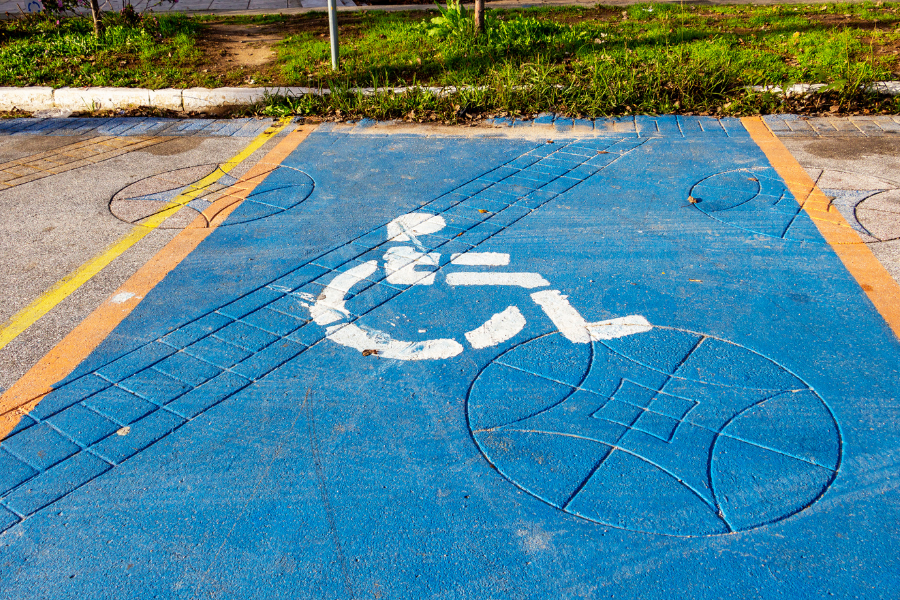Can you drive a car with a prosthesis?
Being able to drive a car means greater independence and freedom. But what about amputees? Can you drive a car with a prosthesis? And is this even allowed? We went in search of answers and this is what we found.
To be allowed to drive a car requires not only a driving license, but also being declared fit to drive. This means that you must be both mentally and physically able to drive. After all, as a road user, you are responsible for both your own safety and that of others. If you have a disability that can affect your safe participation in traffic – such as an amputation – or if your health situation has changed, you are required to report this. In these cases, your fitness to drive will be (re-)assessed.
Not sure if you are still able to drive safely and responsibly, but decide to drive anyway? If an accident occurs, you will be held liable in some cases.
As you can probably understand, there is no one answer to the question of whether you may drive with your prosthesis. This requires an assessment of your fitness to drive. That assessment in turn depends on a number of factors, such as your amputation level and the amputation side. Before it is determined whether you are fit to drive, your personal situation will therefore be examined in detail.
Fitness to drive assessment
In the Netherlands, the Central Office for Motor Vehicle Driver Testing (Centraal Bureau Rijvaardigheidsbewijzen, CBR) assesses your fitness to drive. If you do not yet have a driving license, you start the process by requesting a Declaration of Suitability. This is done by filling out a Health Declaration and sending it to the CBR. This form contains questions about your physical and mental health.
Additional information may be required, such as a doctor’s note or a letter that explains your health situation. If the CBR requests more information to properly assess your fitness to drive, you will be forwarded to a medical advisor.
Driving test
Once all documents have been submitted, the CBR will determine what you require to participate in traffic safely, such as modifications to your car. In some cases, you will be required to take an additional driving test to assess your fitness to drive. During this driving test (no written exam!), an expert will evaluate whether you can drive safely and independently with your disability, with or without modifications to your car.
If the CBR decides that you are fit to drive, you will receive a Declaration of Suitability. The next step is to take the practical driving test – just like everyone else. Naturally, this requires taking driving lessons first. If the CBR has concluded that you require a car with modifications, the driving lessons and practical driving test will take place in a car with the proposed modifications.
Did you pass your practical driving test? You will receive a Fitness to Drive declaration from the CBR. You then submit the Fitness to Drive and Declaration of Suitability to your municipality, which in turn will provide you with your driving license. If certain conditions apply, such as modifications to your car, your driving license will contain codes that refer to these conditions. The driving license is only valid when you drive a car that meets these conditions. Make sure to provide your insurance company with these codes!
Renewing your driving license
If you are an amputee and want to renew your driving license, you will almost always have to submit a new Declaration of Suitability. Helaas kan de aanvraag van deze verklaring flink wat tijd in beslag nemen, met een maximum van vier maanden. So, make sure to start the driving license renewal process on time! The results of your fitness to drive assessment will be sent to you by the CBR by mail. You can then use this report to request a new driving license from your municipality.
Driving with a prosthesis in Belgium
In Belgium, you first need to talk to your general practitioner about your suitability to drive. The next step is to test your driving skills at the Centre for Driving Ability and Vehicle Adjustment (CARA). You start the process by completing and sending in a medical questionnaire . A CARA team then determines whether you are fit to drive. This team consists of doctors, psychologists and driving experts. They assess whether you meet the legal requirements to drive a vehicle and/or whether any modifications are required to drive a car safely. An appointment at the CARA starts with a number of questions and physical tests. During a test drive, you drive a CARA car or your own (modified) car. This is not a formal driving test, but an assessment of your position in the car and/or whether you can operate everything safely.
Did you pass the test? After around ten days, you will receive a Certificate of Driving Suitability, which states the types of modifications that are proposed, among other things. You need this certificate to apply for a temporary driving license, get back a surrendered driving license or extend the validity of your driving license. You can also use the certificate to request reimbursement for modifications if relevant. Once you have had the proposed modifications made to your car by an authorised company, you submit the Certificate of Driving Suitability to your municipality to have your driving license updated. Your driving license will contain various codes depending on the modifications made. Remember to also inform your insurance company about your new driving license.
More information
Important: the contents of this article are not intended as a substitute for professional advice. The CBR (CARA in Belgium) determines whether or not you may drive with your prosthesis. You can read more about driving with a prosthesis on the CBR website or CARA website .
